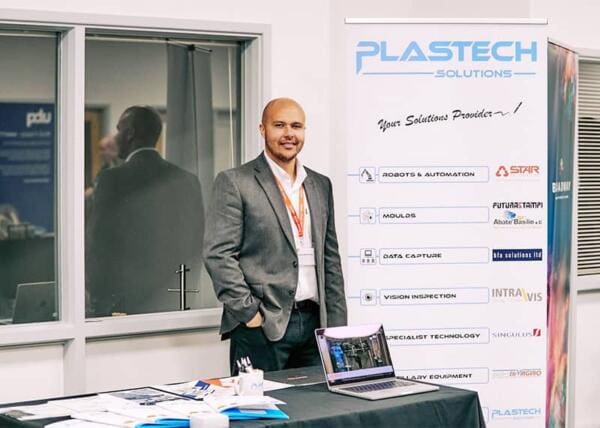
BioCote | The True Nature of Polyvinyl Chloride’s Proclaimed Antimicrobial Properties
Polyvinyl chloride (PVC) is one of the most abundant polymers; with about 40 million tonnes produced annually. However, this very practical plastic is not popular only for its high versatility, but also for its proclaimed inherent antimicrobial properties. Our Technical Team took a closer look at why this property of PVC could be more complex than one might assume.
What is Polyvinyl chloride (PVC)?
PVC itself is a white, granular powder that can be melted at high temperatures and formed into shapes. It is thermoplastic, which means that once it is shaped, it can be reheated and remoulded. However, PVC will begin to decompose at around 135 °C and can immediately discolour and become brittle if exposed to these processing temperatures without a heat stabiliser.
Hydrogen chloride: a by-product of PVC breakdown
An extremely potent acid called hydrogen chloride can be released as a by-product when PVC breaks down. Due to the high temperatures, it is expelled as a gas; a release which can also trigger further breakdown of PVC chains. Hydrogen chloride, however, can become trapped in between the PVC chains and eventually slowly release itself from the product over time. This makes hydrogen chloride a Volatile Organic Compound (VOC) as a result.
Understanding how Hydrochloric acid makes PVC antimicrobial
Because of the powerful biocidal nature of hydrochloric acid (HCl), PVC is recognised for having what are described as “inherent” antibacterial qualities. However, this is not entirely correct. The Volatile Organic Compound that is hydrochloric acid (HCl) is antimicrobial; PVC is not. This, unfortunately, is not a permanent feature of PVC. Due to restrictions on the amount of VOCs allowed, the amount of released HCl gradually decreases to a level where it is no longer efficient in killing bacteria. As a result, there is nothing stopping microbes from flourishing on the product’s surface after this point.
Integrating scientifically proven and long-lasting BioCote® antimicrobial technology
BioCote® is aware of many materials such as PVC off-gassing and producing biocidal VOCs that can distort the results of antimicrobial tests. These VOCs can hide issues contained within formulations and may hide that an antimicrobial additive is being deactivated by something. Because of this, BioCote® requests that materials such as PVC are “aged”. This procedure can reveal formulation problems in products that proved to be antimicrobial, but only for a short-term period. We at BioCote® then work with such manufacturers to address these issues in order to guarantee successful long-term antimicrobial protection that our global client base has come to rely on.
The difference between BioCote® and PVC’s inherent antimicrobial properties
While VOCs cannot be avoided through polymer processing, it is important they are not ignored. If antimicrobials are being incorporated, it is crucial to make sure the technology is working efficiently and continuously. At BioCote® we take all the extra steps needed to provide our customers with data that can independently demonstrate that the antimicrobial technology is effective not only on the day it was manufactured into their product, but even up to 25 years.
Read more news from BioCote here.
BioCote®
+44 (0) 2477 712489
Website
Email






